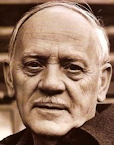Psychologist Leo Ruickbie writes in “The Ghost in the Time Machine,” his 2021 prize winning essay in a competition sponsored by the Bigelow Institute for Consciousness Studies:
On October 14, 1966, Alexander Venn turned to his wife and said, “Something terrible is going to happen, and it won’t be far from here, either.” A sense of foreboding had oppressed him all day. An amateur artist, he turned to his sketchbook to express what he felt. He drew a human head surrounded by black, the impression of coal dust on his mind.
He was not the only one to feel that “something terrible” was imminent. On Tuesday, October 17, a man in Kent became convinced that “On Friday something terrible connected with death is going to happen.” On Thursday morning, October 20, a woman woke in panic after a nightmare of being smothered in what she called “deep blackness.” Later that morning, nine-year-old Eryl Mai Jones said to her mother, “Mummy, let me tell you about my dream last night [...] I dreamed I went to school and there was no school. Something black had come down all over it!”
At 9 p.m. that evening, Mrs. C. Milden was attending a Spiritualist meeting in Plymouth: “a vision appeared before her as if on film, showing an old schoolhouse in a valley and an avalanche of coal rushing down a mountainside.” She saw a small boy with a long fringe of hair surrounded by rescue workers, one of whom was wearing a peaked cap that she found odd. At around 4 a.m. on the morning of Friday, October 21, Sybil Brown in Brighton was terrified by a nightmare of a child screaming in a telephone booth, with another child walking towards her followed by a “black, billowing mass.”
At about the same time, another woman in North London, Lorna Middleton, “awoke choking and gasping and with the sense of the walls caving in.” Far to the northwest of England, an elderly man dreamt of a series of brilliantly illuminated letters spelling out “A B E R F A N.” He had no idea what it meant. At 9.14 a.m., Monica McBean, then at work as a secretary at an aircraft factory, had a vision of a “black mountain moving and children buried under it.”
By 9.14, Eryl Mai was already at Pantglas Junior School in Aberfan, Wales, for the last day before the mid-term holidays. At 9.15, far above the coal-mining village, a mass of water-saturated colliery spoil started sliding down tip 7 and it did not stop till 140,000 cubic yards (110,000 m3) of black slurry was moving down the mountain. People recalled hearing a sound like thunder or a low- flying jet as an avalanche like a “dark glistening wave” swept away two cottages in its path and engulfed the school and surrounding houses. The result was heart-breaking: 116 children and 28 adults, 144 in all, had been killed. Watching events unfold on the television news on Sunday, Mrs. Milden saw a small boy with a long fringe of hair and nearby a worker wearing an odd-looking peaked cap.
The psychiatrist Dr. John Barker took an interest in the disaster after he heard that a survivor had later died of fright. A member of the Society for Psychical Research, he was writing a book on what he called “psychic death” – when people die from non-physical causes, such as fright. Arriving in Aberfan, he heard stories of the premonitions people had had. Contacting Peter Fairley, science editor of the London Evening Standard, he convinced him to publish an appeal for such premonitions. In the course of the next two week, he received 76 replies.
Another public appeal for premonitions made through The Sun and Thompson’s Weekly newspapers by the Oxford Institute for Psychophysical Research was launched three days after Barker’s appeal, garnering information from another 72 correspondents. The News of the World also investigated the question of premonitions. The three surveys brought in a total of 200 replies.
Barker discarded sixteen of the replies and followed-up the others in more detail. In twenty-two cases the person claiming to have had a premonition told at least one other person, and sometimes as many as four, about it before the event, and in another two cases made a written record of their premonition beforehand. All of these replies came from people with no connection to the area and living some distance from Aberfan, mostly in and around London. Thirty-six took place as dreams, whilst the rest included waking visions and feelings of foreboding, mental distress and even physical sensations of choking or suffocation. The dream premonitions were distinctive by giving literal details of the disaster, of having a vivid quality and by representing the impending disaster as happening in the dreamer’s present. Then it dawned on Dr. Barker:
While analyzing the letters, I realized that the time had surely come to call a halt to attempts to prove or disprove precognition. We should instead set about trying to harness and utilize it with a view to preventing future disasters.
Leo Ruickbie, “The Ghost in the Time Machine,” his 2021 prize winning essay in a competition sponsored by the Bigelow Institute for Consciousness Studies. Ruickbie teaches psychology at Kings College and the University of Northamptom in the United Kingdom. Footnotes have been deleted from these online excerpts from his essay. The entire essay may be downloaded at the Bigelow site https://bigelowinstitute.org/contest_winners3.php.










